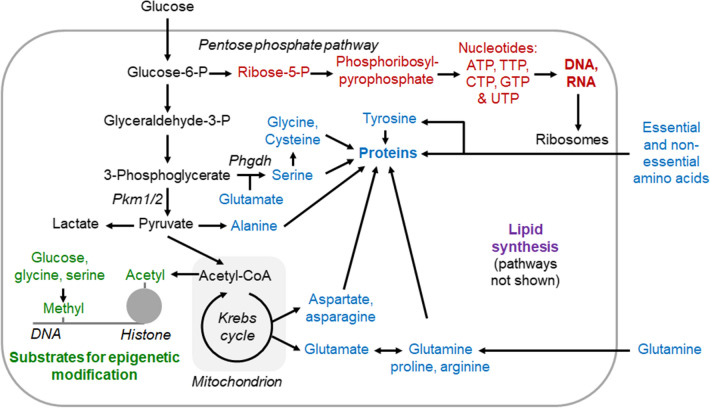Fig. 1.
Schematic showing some connections in-between energy metabolism and anabolism modified after [5]. In proliferating cells, glycolysis is typically upregulated, and glycolytic intermediates and other energy metabolites flow more into anabolic reactions such as nucleotide-DNA/RNA synthesis (red), amino acid-protein synthesis (blue), lipid synthesis (purple) and the synthesis of small groups used for epigenetic modification (green). Note that not only glucose but also glutamine is taken up at a high rate by rapidly proliferating cells [8, 10]. For further information, for example, on substrate synthesis for epigenetic modification, see DeBerardinis and Chandel [5]. CTP cytosine triphosphate, GTP guanosine triphosphate, P phosphate, Phgdh phosphoglycerate dehydrogenase, Pkm1/2 pyruvate kinase muscle isoforms 1 and 2, TTP thymine triphosphate, UTP uracil triphosphate

